Smoky Sunset Thursday
I recently just got back from an extended vacation and happened to get a picture of the smoky sunset on Thursday in Wisconsin. You can actually see the layer of smoke, which looked like thin veil of cirrus clouds in the distance. You can tell it is smoke by the way it turned the sun an orangish-red color.
Smoky Sunrise Friday
Friday mornings sunrise was also very orange as the layer of smoke hung overhead. You can actually see the smoke on the visible satellite from AM Friday, which is fairly faint compared to the cloud deck in western Minnesota.
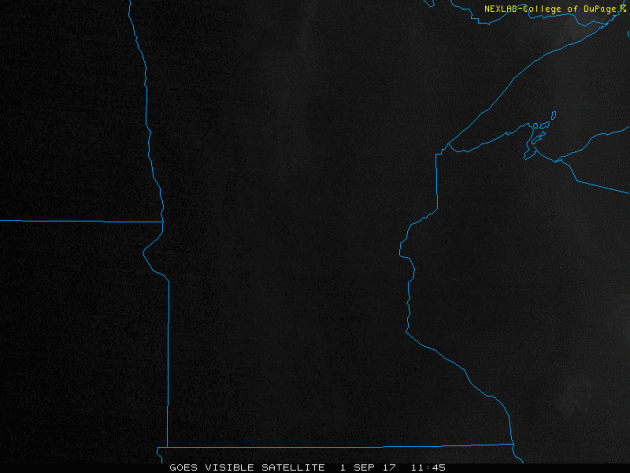
__________________________________________________
“Harvey is a 1,000-year flood event unprecedented in scale”
As Harvey’s rains unfolded, the intensity and scope of the disaster were so enormous that weather forecasters, first responders, the victims, everyone really, couldn’t believe their eyes. Now the data are bearing out what everyone suspected: This flood event is on an entirely different scale than what we’ve seen before in the United States. A new analysis from the University of Wisconsin’s Space Science and Engineering Center has determined that Harvey is a 1-in-1,000-year flood event that has overwhelmed an enormous section of Southeast Texas equivalent in size to New Jersey. There is nothing in the historical record that rivals this, according to Shane Hubbard, the Wisconsin researcher who made and mapped this calculation. “In looking at many of these events [in the United States], I’ve never seen anything of this magnitude or size,” he said. “This is something that hasn’t happened in our modern era of observations. ”Hubbard made additional calculations that accentuate the massive scale of the disaster:
**At least 20 inches of rain fell over an area (nearly 29,000 square miles) larger than 10 states, including **West Virginia and Maryland (by a factor of more than two).
At least 30 inches of rain fell over an area (more than 11,000 square miles) equivalent to Maryland’s size.
See more From WashingtonPost HERE:
________________________________________________________________________
“Harvey’s two-step across Texas: The peculiar meteorology behind a U.S. rain record”
“Over the past few days, a staggering amount of water fell across Southeast Texas and Louisiana. All this water disgorged from one of the greatest meteorological events in U.S. history: an intense Category 4 hurricane named Harvey. This analysis attempts to explain how this extreme storm evolved — from landfall to eventual exit from Texas, with emphasis on the rain generation. The rain accumulation totals Our strategy here is to look at the behavior of this weather system day by day, from Aug. 25-30. But first, let’s examine a map of the preliminary rain amounts across the greater Texas region (above), over this multiday period from Aug. 23-30. These values are all subject to continued verification. The deepest water accumulations encompass Houston, Beaumont, Galveston, Pasadena and Port Arthur.”
See more from WashingtonPost HERE:
____________________________________________________________________
“Harvey’s unusual lightning: We’ve never seen a hurricane in this way”
“When Hurricane Harvey approached the Texas coast for its first of two landfalls on Aug. 25, a new and advanced weather satellite watched its every move. The spacecraft, known as GOES-16, is still in an experimental phase, but the data it provides is available to National Weather Service (NWS) forecasters already. As meteorologists test out the capabilities of this new platform, which launched last year, they are revealing new insights on storm systems. With Harvey, the satellite’s lightning mapper — which tracks lightning over land and out to sea, where current observations fall short — revealed something fascinating. Here’s a video posted by the National Oceanic and Atmospheric Administration (NOAA), which operates the satellite, on Thursday. The yellow flashes represent lightning strikes, either cloud-to-ground discharges or cloud-to-cloud. As with most hurricanes, you’ll notice that the most active area of lightning production is well away from the center of the storm. “
________________________________________________________________________
“Future Hurricanes Will Be Worse Than Harvey”
“Research on Superstorm Sandy yields grim projections about global warming and extreme weather in the decades to come. How powerful would Hurricane Harvey have been in 1880? How much stronger might it be in 2100? A single Hurricane Harvey has been more than anyone can bear. But to better prepare cities for future storms, researchers are preparing to re-watch Harvey thousands of times. They’ve already been studying earlier storms, and their conclusions don’t bode well for the decades to come. In the months and years after Superstorm Sandy’s 2012 assault on New Jersey and New York, Gary Lackmann, an atmospheric science professor at North Carolina State University, was asked how the event might be understood in light of human-driven global warming. He knew that the question everyone wants answered—did climate change cause the storm—wasn’t the right one. Hurricanes were around long before the industrial revolution. Two questions did, however, resonate:
How does climate change affect the frequency or intensity of huge storms?
What would the weather pattern that sustained Sandy have spawned in a cooler past or a hotter future?
(A boy and girl hug their grandmothers’ dogs after being rescued from rising floodwaters due to Hurricane Harvey in Spring, Texas, on Aug. 28, 2017. Photographer: Luke Sharrett/Bloomberg)
_______________________________________________________________________
“Dramatic before and after photos show the scale and scope of Harvey’s devastating floods”
The terms”catastrophic” and “unprecedented” have taken on a new, grim meaning for residents of Texas and Louisiana. Tropical Storm Harvey, which came ashore between Port Aransas and Port O’Connor, Texas, on August 25 as a hurricane, dumped so much rain on the Houston area that it is now considered the most extreme rainstorm on record to strike any U.S. city, dropping 50-inch-plus rainfall totals in some parts of the state. The rain overwhelmed the Houston metro area as well as Beaumont and Port Arthur, sending most rivers to record heights and trapping people in their homes. These images show the scale and impact of the flooding throughout the state.
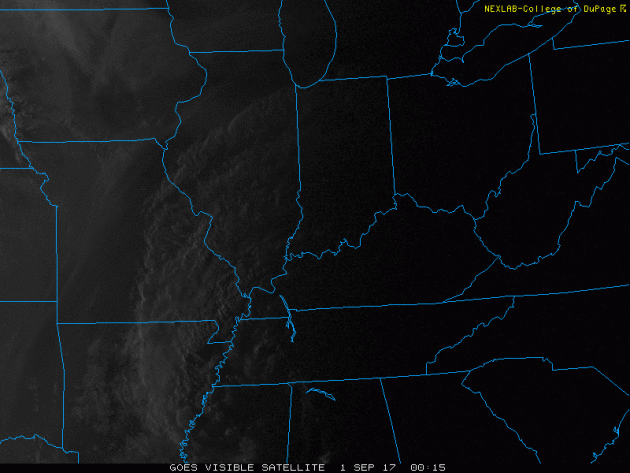
.gif)
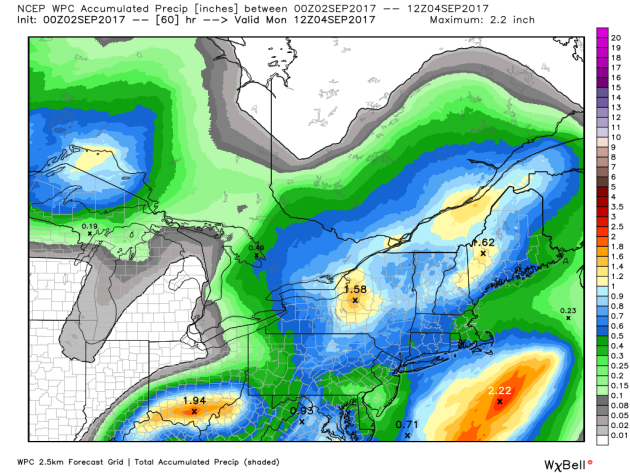
________________________________________________________
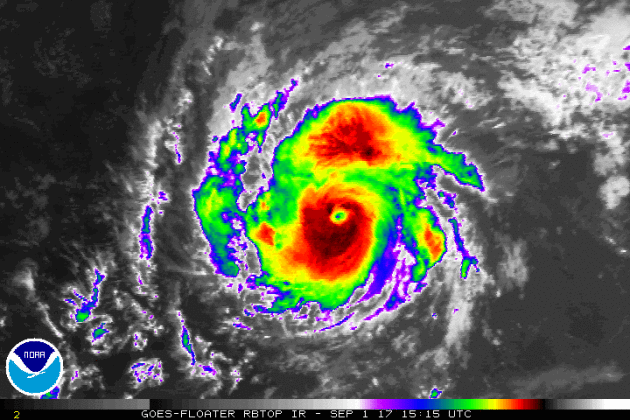
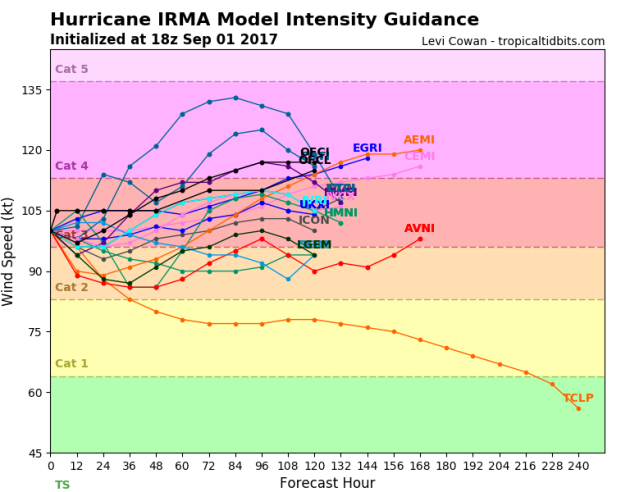
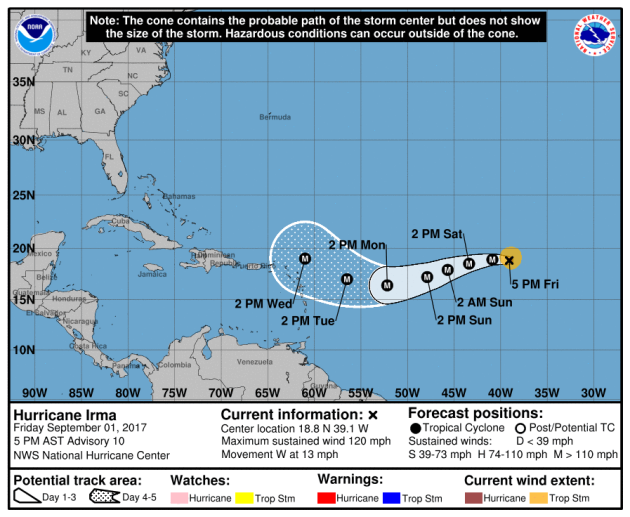
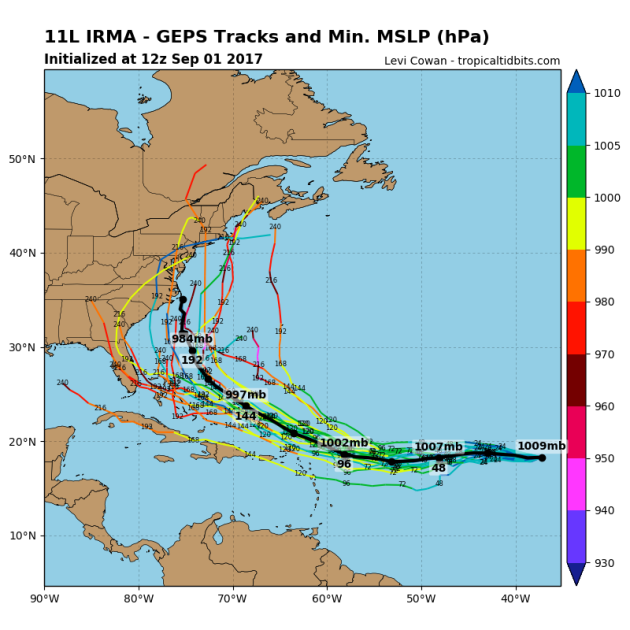
Atlantic Outlook Next 5 Days
.png)
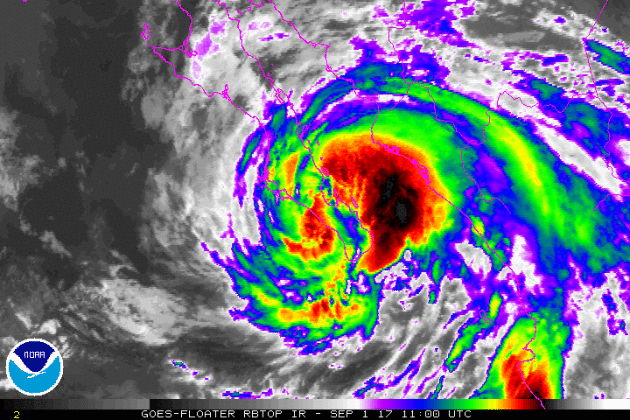
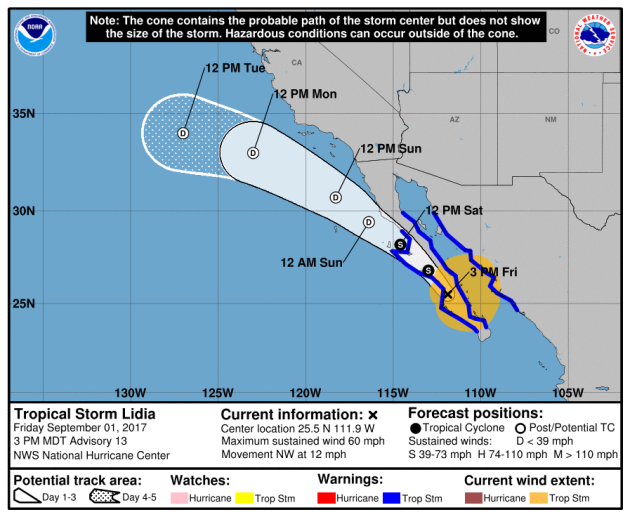
__________________________________________________________________________
It certainly has been a fairly active first half of 2017 with 1310 preliminary tornado reports through August 31st. Note that this is the most tornadoes through August 31st since 2011, when there were 1,732 reports. The map below shows the distribution of the tornadoes so far this year.
.gif)
PRELIMINARY 2017 Tornado Count
According to NOAA’s SPC, the PRELIMINARY 2017 tornado count is 1310 (through August 31st). Note that is the most active year for tornadoes since 2011, when there were 1,732 tornadoes. Keep in mind there was a major tornado outbreak in the Gulf Coast region from April 25-28, 2011 that spawned nearly 500 tornadoes, some of which were deadly. That outbreak is known as the Super Outbreak of 2011 and has gone down in history as one of the biggest, costliest and one of the deadliest tornado outbreaks in history.
.png)
_____________________________________________________________________
National Weather Hazards Ahead…
1.) Heavy rain across portions of the Southeast, the Mid-Atlantic, and the Northeast, Wed-Thu, Sep 6-Sep 7.
2.) Flooding possible across portions of California and the Southwest.
3.) Flooding possible across portions of the Middle Mississippi Valley, the Lower Mississippi Valley, the Ohio Valley, and the Tennessee Valley.
4.) Flooding occurring or imminent across portions of the Lower Mississippi Valley, the Southern Plains, and Florida
5.) Much above normal temperatures across portions of the Central and Northern Great Basin, the Northern Plains, the Northern Rockies, California, and the Pacific Northwest, Mon-Fri, Sep 4-Sep 8.
6.) Heavy rain across portions of the Alaska Panhandle and southern mainland Alaska, Mon-Tue, Sep 4-Sep 5.
7.) High winds across portions of the Alaska Panhandle, southern mainland Alaska, and the Aleutians, Mon, Sep 4.
8.) High significant wave heights for coastal portions of mainland Alaska and the Aleutians, Mon-Tue, Sep 4-Sep 5.
9.) Slight risk of much above normal temperatures for portions of the Central Plains, the Central Great Basin, the Northern Plains, the Northern Rockies, the Central Rockies, California, the Northern Great Basin, the Upper Mississippi Valley, the Pacific Northwest, and the Southwest, Sat-Fri, Sep 9-Sep 15.
10.) Moderate risk of much above normal temperatures for portions of the Pacific Northwest, the Northern Rockies, the Northern Great Basin, and the Northern Plains, Sat-Mon, Sep 9-Sep 11.
11.) High risk of much above normal temperatures for portions of the Northern Rockies and the Northern Great Basin, Sat, Sep 9.
12.) Severe Drought across the Middle Mississippi Valley, California, the Northern Plains, the Northern Rockies, and Hawaii.
.png)
_________________________________________________________
“Crop Loss, Fishing Bans: Montana Becomes Epicenter of Drought in West”
“The state’s governor declared a drought disaster across 20 counties while a National Weather Service official acknowledged a long-range forecast missed the mark. A WET WINTER in 2017 pulled most of the West out of a long and serious drought. But one state was left behind: Montana. Andy Fjeseth, a spokesperson for the Montana Department of Agriculture, said some officials are calling the drought a “100-year event” in the state. It has hit the eastern part of the state Particularly hard. Wheat and hay farmers have lost crops, he said, because normal spring rains never came. Many cattle ranchers have been forced to sell off their animals early or move them long distances to find decent grazing conditions. In May, Montana Gov. Steve Bullock declared a drought emergency across 20 counties in the eastern half of the state.”
See more from Newsdeeply HERE:
(Smoke rises from the Lolo Peak fire in Montana as seen from an airplane on August 18, 2017. The wildfire has expanded to 28 thousand acres, prompting evacuations. The state has been hit with both wildfires and drought this year.CITIZENSIDE/Jay Cline)
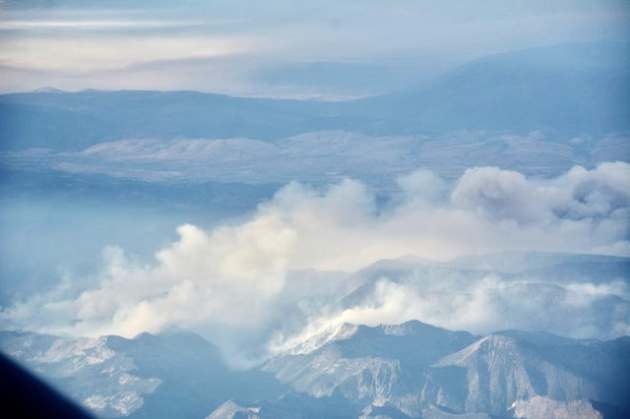
Rain Needed to End Drought
National Weather Outlook
Here’s the weather outlook through the middle of next week, which shows somewhat active weather conditions across parts of the central and eastern US. Scattered showers and storms will continue with the remnants of Harvey as it lifts northeast through the weekend. There will be a bit of a break before another front slides through the eastern half of the country during the first half of the week.
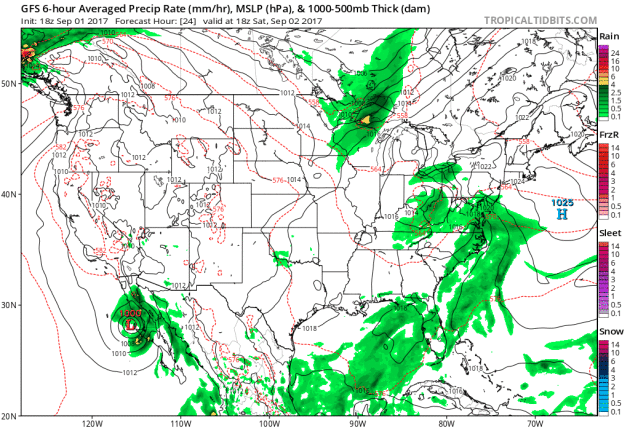
Excessive Rainfall Potential Sunday & Monday
.gif)
.gif)
________________________________________________________
Chetco Bar Fire – 5 Miles Northeast of Brookings, OR
The Chetco Bar Fire in near Brookings, Oregon is a very large wildfire in the Western US that started on Wednesday, July 12th and has grown to more than 131,000 acres! There are more than 1,600 people working on this fire, which is only 10% contained. The estimated containment date is set for Sunday, October 15th.
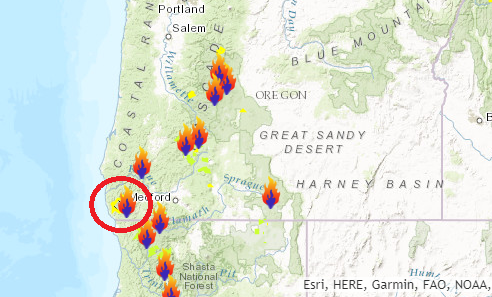
Here’s a look at the current wildfire map across the country. Continued hot and dry weather has helped to spark several wildfires across the Western US. There have even been fires popping up in the Eastern U.S., two of the larger fires are burning in Florida.
Here’s a list of all the current large wildfires from Inciweb:

By Todd Nelson, filling in for DouglasAccording to Mark Seeley at the Minnesota State Climatology Office, Minnesota had a statewide average rainfall of 5 inches during the month of August, which ranks as the 11th wettest on record. The Twin Cities saw 6.75 inches of rain, which was nearly 2.5 inches above average. Redwood Falls was the wettest spot in the state tallying near 13 inches during the month.
Sure it was wet here, but it’s hard to comprehend the amount of water that fell in Texas from Harvey. 51.88 inches fell in Cedar Bayou, which is a new continental U.S. record! Ryan Maue from WeatherBell calculated that Lake Superior would have risen almost 3 feet from all the water that fell in Texas! Approximately 19 trillion gallons of water would also equate to a nearly 1 foot rise in water levels across the entire Great Lakes. Unreal.
After a few showers scoot through the region early Saturday, the afternoon should be filled with sun. Sunday looks like the pick day of the weekend with highs in the 80s under sunny skies.
MONDAY: Breezy and cooler. Isolated PM shower. Winds: NNW 10-15. Wake-up: 63. High: 74.
TUESDAY: Back to school. Feels like Fall. Winds: NW 5-15. Wake-up: 53. High: 66.
WEDNESDAY: Still chilly. Passing clouds. Winds: NW 5. Wake-up: 51. High: 68.
THURSDAY: Mostly sunny. A little warmer. Winds: W 5-10. Wake-up: 52. High: 73.
FRIDAY: Getting better. Still dry. Winds: ENE 5. Wake-up: 56. High: 75.
_______________________________________________________
This Day in Weather History
August 20th
1996: Approximately 8 inches of rain falls over a 2 1/2 hour period in the Mankato area resulting in flash flooding. Numerous roads are closed, basements flooded, and $100,000 of damage results from a lightning strike in Lehiller.
1992: Severe weather affects several counties in the western parts of the County Warning Area. Several tornadoes are reported, along with 3/4 inch hail and damaging winds, as the system passes through Pope, Swift, Stearns, Kandiyohi, Meeker, Brown and Renville Counties.
1975: Severe weather rolls through Stevens, Swift, Kandiyohi, and Meeker counties. 1.5 inch Hail is reported in Stevens and Swift. An F1 tornado also occurs in Swift. An hour later, another F1 Tornado was reported in Kandiyohi County while 69 knot winds occurred in Meeker County. Damages were estimated at $50,000 for the two tornadoes that touched down.
1937: Strong thunderstorms bring heavy rainfall to northern Minnesota, with 4.61 inches of rain dumped on Pokegama. Flooding was reported in Duluth.
________________________________________________________
Average High/Low for Minneapolis
September 2nd
Average High: 77F (Record: 97F set in 1937)
Average Low: 58F (Record: 42F set in 1974)
Record Rainfall: 1.97″ set in 2000
_________________________________________________________
Sunrise/Sunset Times for Minneapolis
September 2nd
Sunrise: 6:37am
Sunset: 7:47pm
Hours of Daylight: 13hours & 11mins
Daylight LOST since yesterday: ~3 minutes and 1 second
Daylight LOST since summer solstice (June 20th): ~2 hours & 26 minutes
__________________________________________________________
Moon Phase for September 1st at Midnight
4.0 Days Before Full “Corn” Moon
Sept. 6, 3:03 a.m. EDT – Full Corn Moon.This moon is also sometimes called the Barley Moon, in those years when the September full moon comes during the opening days of the month — an artifice that was used to keep the Harvest Moon from coming too early.
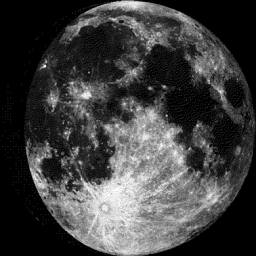
Saturday will be a fairly warm day across that state AFTER the clouds clear. Many spots will warm into upper 70s and low 80s. It might be a little muggy to start, but after the front pushes through, dewpoints will then fall dramatically back into the 40s and 50s, especially across western and northwestern Minnesota.
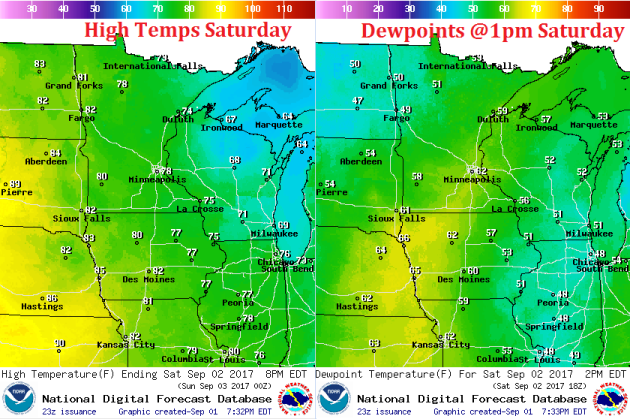
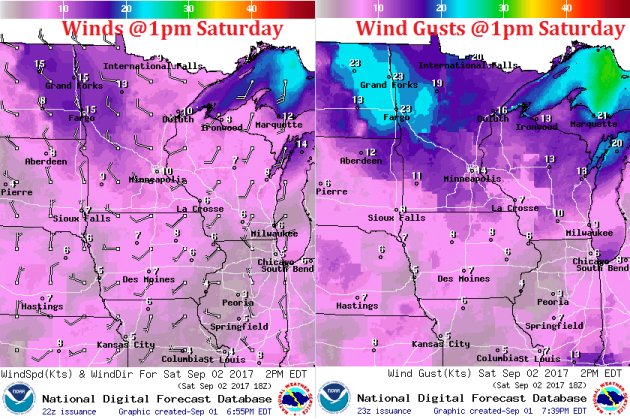
Weather Outlook For Saturday

UV Index for Saturday – HIGH
The UV Index for Saturday will be HIGH, which means that it will only 20 to 30 minutes or less to burn unprotected skin. With that said, if you are planning on spending any extended length of time outside, make sure you wear appropriate attire and lather on the sun block!
__________________________________________________________________________
.png)
.png)
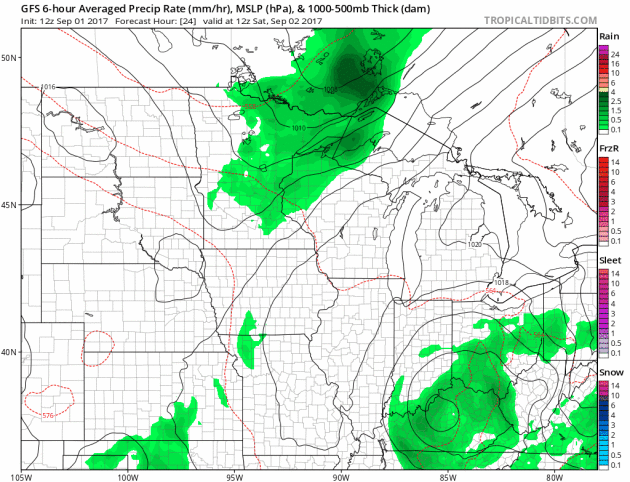
Rainfall Potential Ahead
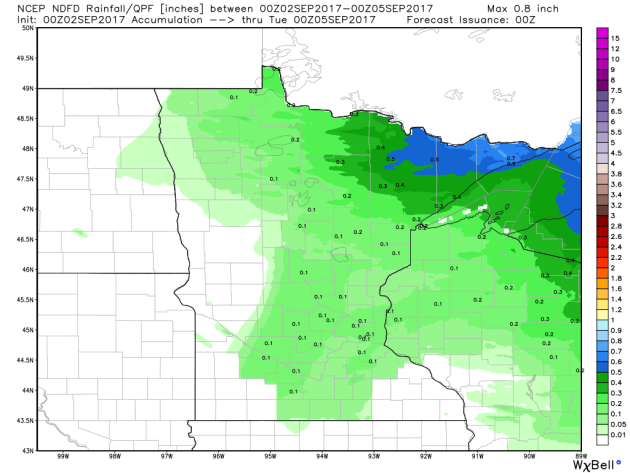
_________________________________________________________
August 2017 – 11th Wettest in Minnesota State History
It was a pretty wet month of August with the Twin Cities seeing 6.75″ of rain! That is 2.45″ above average for the month! Note that some locations in western Minnesota saw nearly 10″ to 12″+ with Redwood seeing the most at 12″ of rain! Here’s an excerpt from Mark Seeley’s Weather Talk, which suggests that Minnesota had it’s 11th wettest August in state history!
The most noteworthy climate attribute of August was the rainfall. Overall the statewide average rainfall was over 5 inches, ranking as the 11th wettest month of August in state history. Some western and southern communities reported their wettest August in history with total rainfall values over 10 inches. Redwood Falls topped the state network reports with over 13 inches. They reported the largest ever 1-day rainfall on August 17th in state history with a measurement of 8.12 inches. In addition over 40 climate stations in the state reported at least one new daily rainfall record during the month.
.png)
Precipitation Year to Date
Here’s a look at how much precipitation we’ve seen so far this year. Note that precipitation amounts are quite a bit higher as you go east into Wisconsin, while precipitation amounts fall considerably as you head west into the Dakotas. The Twin Cities has seen 25.65″ of precipitation this year, which is 3.48″ above average. La Crosse, WI has seen 31.76″ of precipitation this year, which is 7.80″ above average! However, Fargo, ND has seen only 10.50″ of precipitation this year, which is -5.56″ below average, while Minot, ND has seen only 5.33″ of precipitation this year, which is 8.11″ below average!
.png)
US Drought Monitor
While much of the state saw appreciative rainfall during the month of August and so far this year, parts of western and northwestern Minnesota are dealing with moderate drought and abnormally dry conditions. According to the US Drought Monitor, 17.5% of the state is considered to be in a moderate drought. Note 26.8% of the state is considered to be abnormally dry, while last week 27.2% was abnormally dry last week.
______________________________________________________
Pollen Forecast
____________________________________________________________________________
Minneapolis Temperature Outlook
Here’s the temperature outlook through September 16th, which shows temps warming into the low/mid 80s this weekend. However, another cool front will sweep through on Monday, which will bring temperatures down into the 60s midweek. With kids back to school on Tuesday, it will most definitely feel like fall! Late week temperatures will warm back into the 70s and could stay there through mid-month.
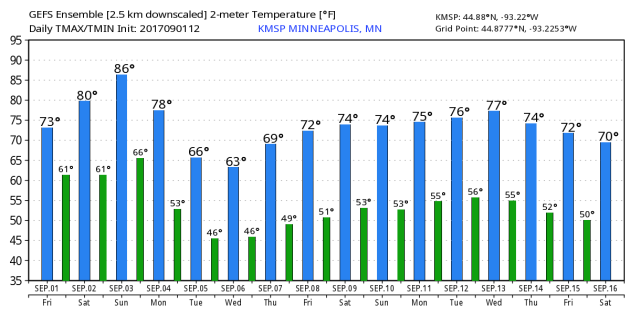
According to NOAA’s CPC, the extended temperature outlook from September 11th through the 15th suggests warmer than average temperatures settling back in across much of the Midwest and High Plains with the cooler air lingering across the Ohio Valley.
___________________________________________________________
Extended Temperature Outlook
According to NOAA’s CPC, the extended temperature outlook through September 15th shows that a good chunk of the Eastern and Southern U.S. will be cooler than average, but the Western US will remain above average.
Extended Temperature Outlook
Here’s the extended 850mb temperature anomaly loop into the middle part of September. This describes how warm or cold (from average) mid/low level temperatures will be over time. Note that the cooler blues moving back in across much of the Central US as we head into next week, while the warmer reds/oranges look to continue across the Western US.
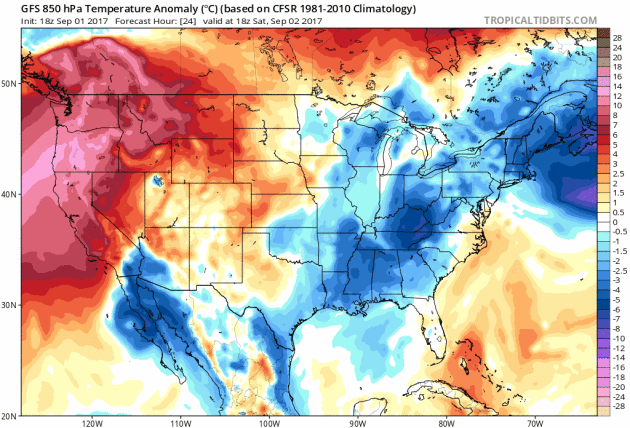
____________________________________________________________
__________________________________________________________-
Weather Outlook Ahead
The weather outlook over the next couple of days shows somewhat unsettled continuing in the Eastern and Northeastern US as the remnants of Harvey lift northeast through the weekend. A bubble of high pressure will then take over across a good chunk of the Eastern half of the country before another cool front arrives early next week. Meanwhile, spotty showers and storms will be found in the Desert Southwest as a little moisture from LIDIA clips the region.
.gif)
5 Day Precipitation Outlook
According to NOAA’s WPC, the next several days could produce areas of locally heavy rainfall across parts of the Eastern and Northeastern US as the remnants of Harvey push through the area this weekend. There also appears to be lingering heavy rainfall potential across the Gulf Coast and Florida with some 1″ to 2″ possible. Also note the heavy rain south of California as LIDIA scrapes across the Baja California Peninsula. Meanwhile, much of the western and northwestern parts of the country will remain hot and dry!
.gif) ___________________________________________________________________
_______________________________________________________________________________________________________________________________
____________________________________________________________________
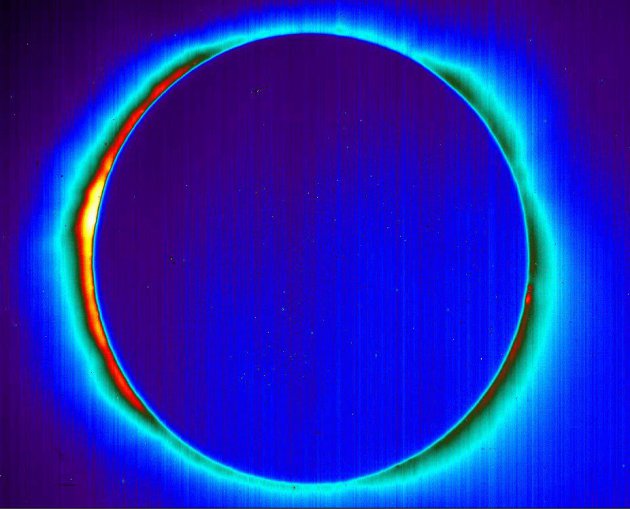
______________________________________________________________
_________________________________________________________________________


